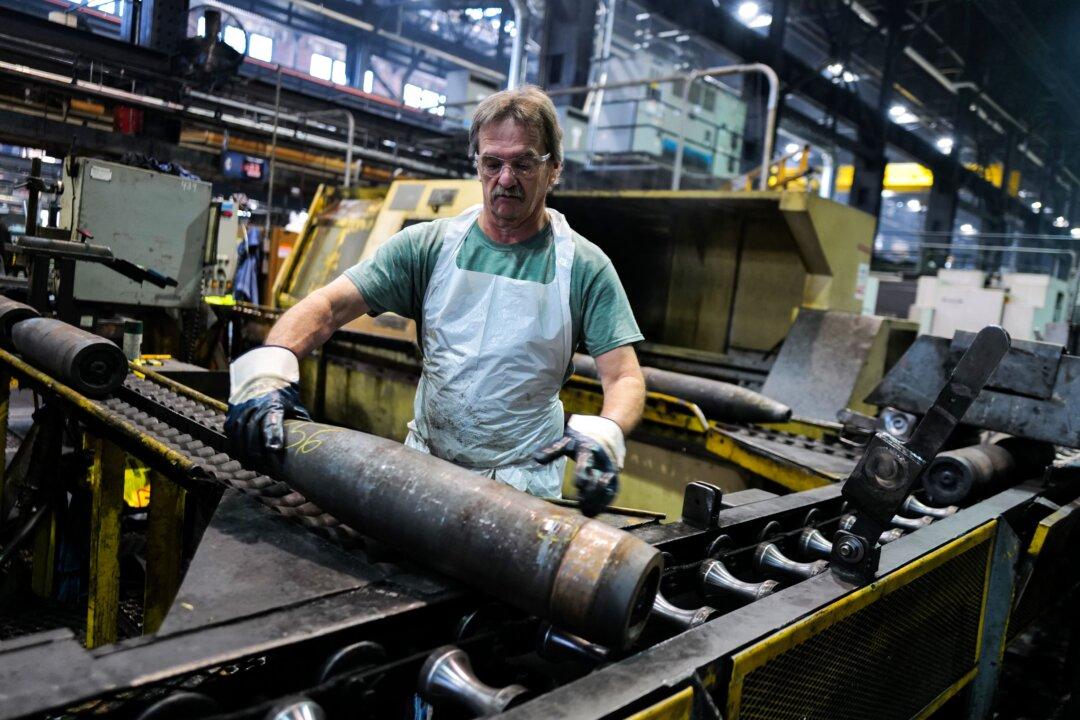Commentary
A great advantage of reading, including news, is you can do a double take. It’s all gliding soothingly by,
including “Canada’s Minister of National Defence, promised $4.4 million to three Canadian munitions manufacturers this March, to research and refine processes to design and produce NATO standard 155-millimetre munitions in Canada.” Then you suddenly go, “Aaack what?”
You do so because 155 mm is, as the term “standard” implies, standard. In widespread use for decades, though Ukraine has run so short it’s
only firing about 2,000 a
day. And yes to that double-double take over “day.” Not week, month, or year.
Being a journalist, not a Canadian general, I checked and the 155 mm shell dates waaaay back to an 1874 French committee formed after their disastrous Franco-Prussian War defeat. Its deliberations led to the onomatopoeically named “De Bange” cannon, though for
its inventor, not its sound, who somehow figured it out without a Canadian government grant.
There was much experimentation and banging of various sorts in both World Wars, including the deadly German 88 mm and workhorse British “25-pounder” of George Blackburn’s outstanding Canadian World War II trilogy at 87.6 mm. The U.S. 105 mm was widely used long after 1945, but around 2000, NATO armies standardized on 155 which Wikipedia
calls “a good compromise between range and power, while using just a single calibre greatly simplifies the logistics burden.” Or would if DND were not involved.
Alas, the 155 mm is a great mystery to them. Which in turn is a great mystery to me since there’s even this thing called a “GC-45 gun” (N.B. a military “gun” is not a rifle or pistol but an artillery piece, and if you confuse them the Marines make you do calisthenics while chanting a rude song, or used to).
Again I learn
from Wikipedia, not espionage or a lifetime in Canadian defence procurement, that it’s “a 155 mm howitzer” (artillery piece) in service in a place called “Canada” since the 1970s. Meaning, here patronizing the Canadian military, not my readers, it fires 155 mm shells. Bange! And has for over half a century. How do we not know how to make them?
You may answer cynically that we probably ran out of such munitions so long ago even grizzled veterans have forgotten what they looked like or where they were stored. But
according to retired Lt.-Gen. Andrew Leslie, we prudently kept several thousand training shells somewhere, enough for a day’s combat in Ukraine. By someone else.
It’s not just us. The former director of Britain’s “Office for Net Assessment and Challenge”
just warned that the UK’s military is so hollow that in any action larger than a peacekeeping or humanitarian relief operation “we would run out of ammunition rapidly. ... The UK has reached a situation where it cannot defend the British homelands properly.” Despite their government spending well over a
trillion pounds a year on whatever.
Meanwhile in Canada, while overall spending has been hiked by two-thirds since 2015, we haven’t gotten anywhere near the 2 percent of GDP on defence that NATO members, including Canada, promised. And even if we did, there’s a serious question whether we’d get nearly enough for the money.
Indeed, another “aaack what” news story says
we’ve set sail on a rearmament voyage without map or compass. Supposedly we’ll get 15 “Canadian Surface Combatant” vessels, a name only a sociologist/bureaucrat could love, unlike “battleship,” “destroyer,” or even “frigate,” for an initial (now you laugh) $26 billion that somehow inflated to $60 billion if you believe DND, $84 billion if you believe the Parliamentary Budget Officer, and about $150 billion if you believe past experience. But still no ships. Just a trial piece of hull or something (technically a “test module”). And get this, or don’t: The original goal of delivering the first CSC already, before 2024, has become nine by 2040 and 15 by 2050. (Versus
over 1,000 total surface ships in World War II.)
Memo to China: Please do not invade Taiwan for another 15 years. We’re still doing drawings here. Of ships to be obsolete before launch, if any. And please don’t sink one. We’ll have none to spare. And it’s all so odd because warships and especially 155 mm shells are actually fairly familiar objects nowadays.
Donna Kennedy-Glans’ National Post story quoting Lt.-Gen. Leslie also said “the Americans have built a greenfield ammunition factory in Mesquite, Texas, that will produce 30,000 to 40,000 rounds a month.” So someone knows how to make shells. Why not just buy them “off the shelf,” given that business about the logistical efficiency of standardization?
In Canada, it’s not how we fail to roll. And yes, you read it right, after spitting out your coffee.
Views expressed in this article are opinions of the author and do not necessarily reflect the views of The Epoch Times.







